When I was a kid, it was still very common to hear people talk of “pane e companatico“, meaning essentially “bread and whatever goes with it”. This is a linguistic trace of the central role played by bread in the Italian culinary tradition, especially when “companatico” was scarce and more expensive than most people could afford. Bread is so important in our dietary tradition that we have national laws explicitly meant to define the different types and the products which can go in its preparation.
Italians apparently eat 66kg of bread per person every year. My grandparents ate bread with anything: pasta, vegetables and even fruit. I remember being served bread and figs and bread and wine with sugar during festive family meals. And every time I go to my parents’ place in the countryside, I cannot but remember my grandfather sitting on a half-broken wooden bench, slicing a stale loaf of bread with his pocket knife and eating it with ripe grapes or peaches.
Often guests ask us about Tuscan bread: how it is made, why we don’t use any salt, whether it is a typical thing of Italian bread, etc. So I started looking into these matters and I discovered a rich and diverse reality. In Italy there are 200 different types of bread (which can be classified in 1500 subtypes): every region has its own special types.
Bread is generally made with flour, water and leaven. However, there are many different types of bread made with flour obtained from cereals other than wheat, such as maize, pulses, or soy beans. In the past, the dough was prepared and left to rise for a couple of days in a cool and dry place. The freshly baked loaves were generally made once a week and preserved in a similar way.
There are three different procedures to make bread: the so-called “direct” method, which consists in mixing all the ingredients at the same time; the “semi-direct” method, consisting in mixing all the ingredients but some leavened dough which is added later; and the “indirect” method, which consists in making a mix of water, leaven and flour called “biga” and then, 48 hours later, all the other ingredients are added to this leavened dough.
The southern and northern regions of the country have the largest number of officially recognized types of bread, most of which have received a D.O.P. (Di Origine Protetta), D.O.C. (Di Origine Controllata) o I.G.P. (Indicazione Geografica Protetta) certification.
Tuscan Bread
Bread with no salt is by no means a national thing: on the contrary, it’s the distinguishing feature of the bread made in Tuscany, and in some parts of Umbria and Le Marche. This makes it particularly suitable to accompany tasty and salty cured meats, “crostini” sauces, and aged cheese typical of the local cuisine, but also to be used as a base for traditional soups like “minestra di pane” and “ribollita”.
This peculiarity of the Tuscan bread goes back to the 12th century, when the Pisans hampered the salt trade to damage their worst enemies, the Florentines. This made it too expensive for the humble people of the region to buy salt.
There are many local varieties of bread in Tuscany, all of which tell of an ancient culinary tradition. Besides the typical “pane toscano“, other delicious types of bread produced in Tuscany are:
- “pane di farro” made with spelt flour and “pane di neccio” made with chestnut flour, both typical of the Garfagnana, the mountain area north of Lucca;
- “panina gialla aretina“, bread with saffron typical of the Arezzo area and produced during Easter time;
- schiaccia maremmana, a type of focaccia made in the Maremma, sometimes with pork fat.
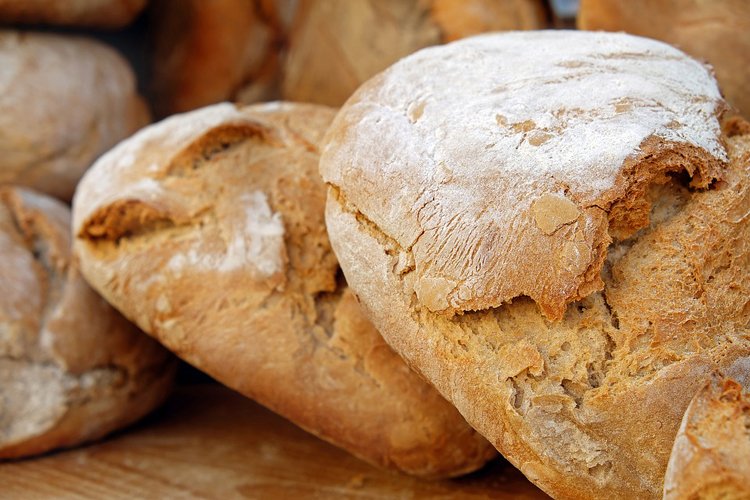
Other popular Italian breads
Some popular types of bread from Northern Italy are:
- Pan nér (black bread) a dark bread made with oats, typical of the Valle d’Aosta. It was made once a year at Christmas time and preserved to be used throughout the year.
- Grissino, breadsticks made in Piedmont.
- Michetta or Rosetta, Lombardia, a small round loaf of bread typically used for panini. A curiosity: in English the word panini is often used to indicate a sandwich. However, this is the plural form of the Italian noun panino, which means small loaf of bread or sandwich. The English usage of the term is therefore not grammatically correct in Italian.
- Cioppa or Cioppeta and Pan Scaféto today also known as Pan biscotto, bussolà di Chioggia (Veneto).
- Biga and grispolenta (Friuli Venezia Giulia).
- Pane d’avena (oats), Pane di Segale, and Pane al Papavero (poppy seeds), Trentino Alto Adige.
- Piadina, Coppia Ferrarese, Gnocco Fritto and Tigelle in Modena (Emilia Romagna).
- Focaccia genovese and galletta (Liguria).
Some popular types of bread in the regions of central Italy are:
- Pane di Terni, without salt like the Tuscan bread (Umbria).
- Crescia, pane nociato (bread with walnuts) and pane con mosto (bread with must)(Le Marche).
- Ciriola romana and Pane casereccio di Genzano (Lazio).
- Pane casereccio aquilano, pane di cappella and pane di mais (Abruzzo).
Some popular types of bread in the regions of Southern Italy are:
- Pagnotte Santa Chiara, Pane Cafone, Pane di Saragolla (Campania).
- Pane di Matera (Basilicata).
- Frisella, pane di Altamura, puccia and taralli (Apulia).
- Pitta, friselle and pane di Pellegrina (Calabria),
- Pane di Lentini, U filuni and pane casereccio siciliano (Sicily).
- Civraxiu, coccoi a pitzus, pane carasau, su zichi (Sardinia).
I would like to thank Monica Cesarato (@monicacesarato) for telling me about bussolà and tigelle!







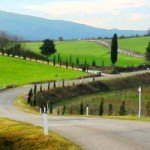

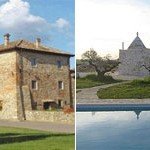
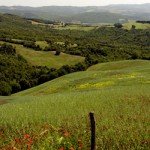
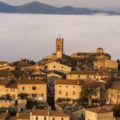


Spent two weeks in Tuscany in 2008. Stayed in one place and frequented the Co-Op ogni giorno! I became accustomed to asking for pane con sale after the first few days. We are so accustomed to salted bread that we could not enjoy the true Tuscan offering. I imagine we could acquire a taste for it after a while.
I prefer salted bread too, but until not long ago, it was impossible to find.
Thank you for your comment!
I’m learning so much today reading all of the entries on your blog. Thanks for sharing this information with us.
Anyone know anything about ciopa/ciope/cioppa? We grew up on it but can’t find it anywhere. Our extended family and friends have been trying to hunt down a source (we’re in the Chicago area) or even some concrete information about how to make it. Thanks.
Jeff
jeffpis@comcast.net
It’s a type of bread that is typical of Veneto. You can find plenty of links in Italian if you google “ciopa pane veneto”.